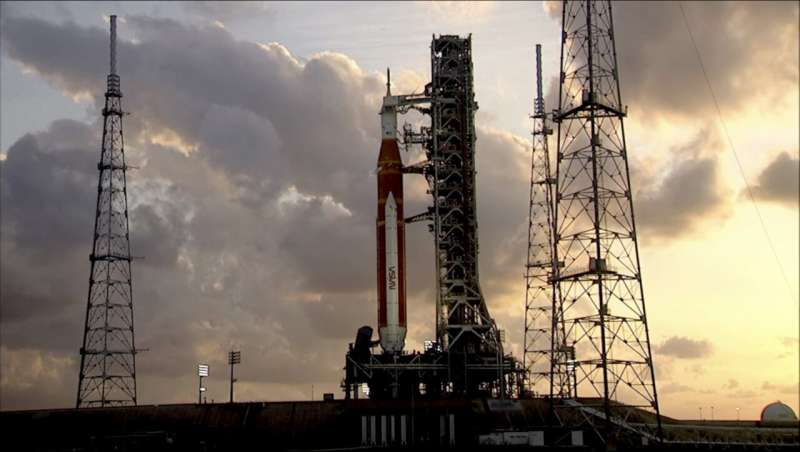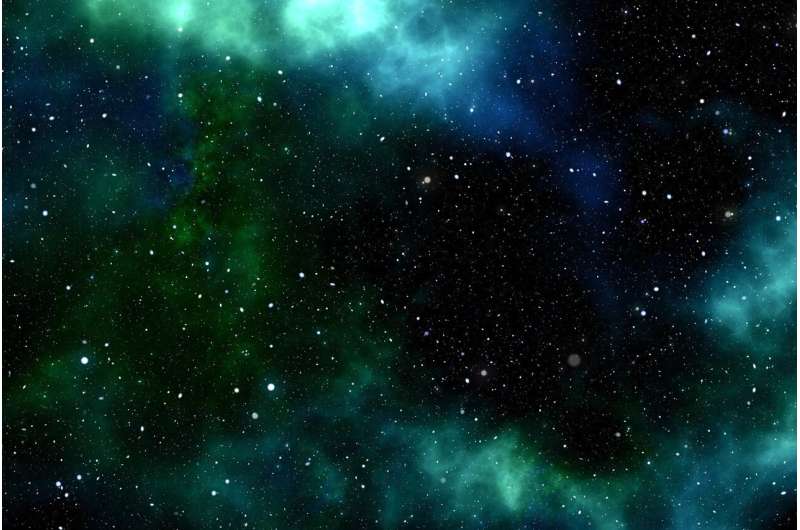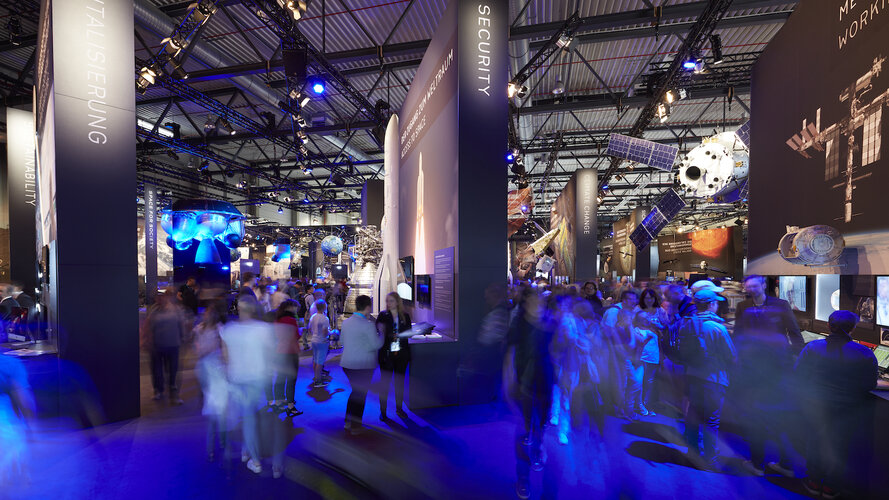
Copernical Team
Moon water may have originated below ground
 Chinese scientists have discovered that the majority of water found on the moon may have originated from its interior rather than from solar wind bombarding its surface with hydrogen ions that eventually formed water, according to a study published in the journal Nature Communication on Tuesday.
The discovery may provide critical clues to one of the most hotly debated questions regarding o
Chinese scientists have discovered that the majority of water found on the moon may have originated from its interior rather than from solar wind bombarding its surface with hydrogen ions that eventually formed water, according to a study published in the journal Nature Communication on Tuesday.
The discovery may provide critical clues to one of the most hotly debated questions regarding o NASA fully loads Artemis 1 rocket with fuel in successful 'wet' rehearsal
 NASA's fourth attempt Monday to complete a practice launch day exercise for its huge uncrewed moon rocket Artemis 1 was deemed a success at the Kennedy Space Center in Florida.
Crews were able to fully load the rocket with super-cold liquid hydrogen propellent and successfully reach the "terminal count" phase for the first time before the countdown was automatically paused at T-minus 29 se
NASA's fourth attempt Monday to complete a practice launch day exercise for its huge uncrewed moon rocket Artemis 1 was deemed a success at the Kennedy Space Center in Florida.
Crews were able to fully load the rocket with super-cold liquid hydrogen propellent and successfully reach the "terminal count" phase for the first time before the countdown was automatically paused at T-minus 29 se SpaceX launches three rockets in 36 hours
 SpaceX launched three missions in just over 36 hours, including two from Florida's Space Coast with most recent a two-stage Falcon 9 early Sunday.
The third rocket lifted off from Florida's Cape Canaveral Space Force Station at 12:27 a.m. carrying a communications satellite for Louisiana-based Globalstar.
Earlier, the company founded by billionaire Elon Musk launched 53 Starlink inte
SpaceX launched three missions in just over 36 hours, including two from Florida's Space Coast with most recent a two-stage Falcon 9 early Sunday.
The third rocket lifted off from Florida's Cape Canaveral Space Force Station at 12:27 a.m. carrying a communications satellite for Louisiana-based Globalstar.
Earlier, the company founded by billionaire Elon Musk launched 53 Starlink inte ISS maneuvered around Russian satellite debris
 Russian cosmonauts used a cargo ship docked at the International Space Station to maneuver the orbiting lab around space debris from the Russian satellite Cosmos 1408.
The Russian Progress MS-20 uncrewed transport cargo spacecraft, identified by NASA as Progress 81, fired its thrusters for 4 minutes and 34 seconds to move the ISS away from the Cosmos 1408 debris on Thursday.
"I c
Russian cosmonauts used a cargo ship docked at the International Space Station to maneuver the orbiting lab around space debris from the Russian satellite Cosmos 1408.
The Russian Progress MS-20 uncrewed transport cargo spacecraft, identified by NASA as Progress 81, fired its thrusters for 4 minutes and 34 seconds to move the ISS away from the Cosmos 1408 debris on Thursday.
"I c South Korea space rocket launch puts satellites in orbit
 South Korea said Tuesday it had successfully launched its homegrown space rocket and placed a payload into orbit in a "giant leap" for the country's quest to become an advanced space-faring nation.
The Korea Satellite Launch Vehicle II, nicknamed Nuri and emblazoned with the South Korean flag, lifted off at 4:00pm (0700 GMT) from the launch site in Goheung on the southern coast, trailing a c
South Korea said Tuesday it had successfully launched its homegrown space rocket and placed a payload into orbit in a "giant leap" for the country's quest to become an advanced space-faring nation.
The Korea Satellite Launch Vehicle II, nicknamed Nuri and emblazoned with the South Korean flag, lifted off at 4:00pm (0700 GMT) from the launch site in Goheung on the southern coast, trailing a c easyJet signs up for space-enabled digital skies

Passengers on board commercial airline easyJet will speed to their destinations faster and greener, thanks to an ESA-backed initiative to digitalise the skies.
NASA fuels moon rocket for 1st time in countdown rehearsal

S. Korea launches homegrown space rocket in 2nd such attempt

South Korea launched its first domestically built space rocket on Tuesday in the country's second attempt, months after its earlier liftoff failed to place a payload into orbit.
A successful launch would boost South Korea's growing space ambitions but also prove it has key technologies to build a space-based surveillance system and bigger missiles amid animosities with rival North Korea, some experts say.
The three-stage Nuri rocket carrying what officials call a functioning "performance verification" satellite blasted from South Korea's only space launch center on a small island off its southern coast at 4 p.m.
Officials are to announce the results of the launch later Tuesday.
In the first attempt last October, the rocket's dummy payload reached its desired altitude of 700 kilometers (435 miles) but didn't enter orbit because the engine of the rocket's third stage burned out earlier than planned.
If Tuesday's launch is successful, South Korea would become the world's 10th nation to place a satellite into space with its own technology.
South Korea, the world's 10th-largest economy, is a main supplier of semiconductors, automobiles and smartphones on world markets.
Space tech to be put to test on Asia-bound Fiat Panda

Two ESA engineers are offering a unique testbed for novel space technology: a second-hand, two-decade-old Fiat Panda, set to be driven 16 000 km to compete in the Mongol Rally from Europe to the Mongolian steppes during summer 2023. Having already taken part in the Panda Raid race to Morocco and back, the ‘space2ground’ team plans to perform on-board testing over the course of their epic Asiatic drive.
ESA to wow the Berlin International Airshow

Crowds at the Berlin International Airshow – which will focus on innovation, new technology and sustainability – are set to be wowed by space.




































